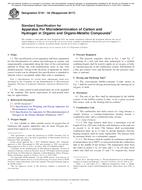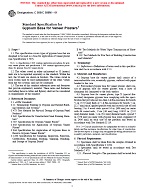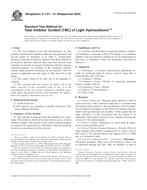1.1 This practice is intended to be used as a supplement to Practices E 1742, E 1255, and E 2033.
1.2 This practice describes procedures for radiologic examination of flat panel composites and sandwich core materials made entirely or in part from fiber-reinforced polymer matrix composites. Radiologic examination is: a) radiographic (RT) with film, b) Computed Radiography (CR) with Imaging Plate, c) Digital Radiology (DR) with Digital Detector Array's (DDA), and d) Radioscopic (RTR) Real Time Radiology with a detection system such as an Image Intensifier. The composite materials under consideration typically contain continuous high modulus fibers (> 20 GPa), such as those listed in 1.4.
1.3 This practice describes established radiological examination methods that are currently used by industry that have demonstrated utility in quality assurance of flat panel composites and sandwich core materials during product process design and optimization, process control, after manufacture inspection, in service examination, and health monitoring.
1.4 This practice has utility for examination of flat panel composites and sandwich constructions containing but not limited to bismaleimide, epoxy, phenolic, poly(amide imide), polybenzimidazole, polyester (thermosetting and thermoplastic), poly(ether ether ketone), poly(ether imide), polyimide (thermosetting and thermoplastic), poly(phenylene sulfide), or polysulfone matrices; and alumina, aramid, boron, carbon, glass, quartz, or silicon carbide fibers. Typical as-fabricated geometries include uniaxial, cross ply and angle ply laminates; as well as honeycomb core sandwich constructions.
1.5 This practice does not specify accept-reject criteria and is not intended to be used as a means for approving flat panel composites or sandwich core materials for service.
1.6 To ensure proper use of the referenced standards, there are recognized nondestructive testing (NDT) specialists that are certified according to industry and company NDT specifications. It is recommended that a NDT specialist be a part of any composite component design, quality assurance, in service maintenance or damage examination.
1.7 This standard does not purport to address all of the safety concerns, if any, associated with its use. It is the responsibility of the user of this standard to establish appropriate safety and health practices and determine the applicability of regulatory limitations prior to use.
Product Details
- Published:
- 06/01/2009
- Number of Pages:
- 5
- File Size:
- 1 file , 100 KB


